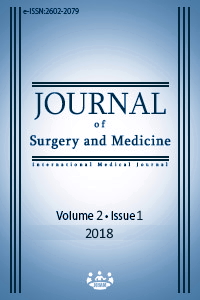A forgotten approach after cardiac arrest due to acute myocardial ınfarction: Neuroprotective therapeutic hypothermia
Keywords:
Cardiac arrest, therapeutic hypothermia, external coolingAbstract
In patients with spontaneous circulation after cardiopulmonary resuscitation, therapeutic hypothermia is defined as the reduction of body temperature to 32-34 ° C within the first 4-6 hours for neuroprotective purposes and to be maintained at this level for 12-24 hours after reaching the target temperature. Therapeutic hypothermia has been practiced since the 1940s. The aim of therapeutic hypothermia is to reduce cerebral edema, convulsive activity, metabolic demand and associated complications by providing low body heat. Therapeutic hypothermia is applied to increase life expectancy and quality of life. In out-of-hospital cardiac arrest, should be performed in comatose patients where initial rhythm is ventricular fibrillation and spontaneous circulation is returned. Herein, we present a 44 years old patient who had an aborted sudden cardiac death due to acute myocardial infarction and performing cardiopulmonary resuscitation for 30 minutes and discharged after 6 days with a successful therapeutic hypothermia.
Downloads
References
-Polderman KH. Induced hypothermia and fever control for prevention and treatment of neurological injuries. Lancet. 2008 Jun 7;371(9628):1955-69.
- Laver S, Farrow C, Turner D, Nolan J. Mode of death after admission to an intensive care unit following cardiac arrest. Intensive Care Med (2004) 30:2126–2128.
- M. Holzer, E. Cerchiari, P. Martens, R. Roine, F. Sterz, P. Eisenburge et al. Mild therapeutic hypothermia to improve the neurologic outcome after cardiac arrest. N Engl J Med 2002 May 30;346(22):1756.
- Gebhardt K, Guyette FX, Doshi AA, Callaway CW, Rittenberger JC,Post Cardiac Arrest Service. Prevalence and effect of fever on outcome following resuscitation from cardiac arrest. Resuscitation. 2013;84:1062.
- Arrich J,Holzer M, Havel C, Müllner M, Herkner H. Hypothermia for neuroprotection in adults after cardiopulmonary resuscitation. Cochrane Database Syst Rev 2012; 9:CD004128.
-Wright WL, Geocadin RG. Postresuscitative intensive care: Neuroprotective strategies after cardiac arrest. Semin Neurol 2006; 26: 396-402.
- John Bailitz, MD, Mark Hansen, MD, Mike Nelson, MD. Therapeutic Hypothermia in the Emergency Department .The Practical Journal of Emergency Phsycians. Emergency Medicine Reports 2009; 30(20):14.
- Busto R, Globus MY, Dietrich WD, Martinez E, Valdes I, Ginnberg MD. Effect of mild hypothermia on ischemia-induced release of neurotransmitters and free fatty acids in rat brain. Stroke 1989;20:904-10.
- Hypothermia after Cardiac Arrest Study Group; Holzer M. Mild therapeutic hypothermia to improve the neurologic outcome after cardiac arrest. N Engl J Med 2002; 346: 549-556.
- Bernard SA, Gray TW, Buist MD, Jones BM, Silvester W, Gutteridge G, et al. Treatment of comatose survivors of out-ofhospital cardiac arrest with induced hypothermia. N Engl J Med 2002; 346: 557-563.
- Nielsen N, Wetterslev J, Cronberg T, Erlinge D, Gasche Y, Hassager C, et al. Targeted Temperature Management at 33°C versus 36°C after Cardiac Arrest. N Engl J Med 2013; 369:2197.
- Bernard S. Hypothermia after cardiac arrest: Ex¬panding the therapeutic scope. Crit Care Med2009;37:S227-33.
Downloads
- 5756 5189
Published
Issue
Section
How to Cite
License
Copyright (c) 2018 Abdullah Özçelik, Yakup Alsancak, Ahmet Seyfeddin Gürbüz, Abdullah İçli, Ahmet Soylu
This work is licensed under a Creative Commons Attribution-NonCommercial-NoDerivatives 4.0 International License.















